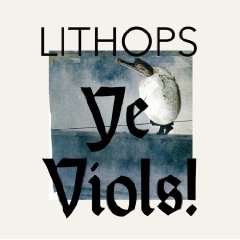There’s that thread in post-war German music which, fecund as the coal seams under the banks of the Ruhr, recurs as a kind of dialectic between the romantic and the realist; the dreamlike and the dystopian.
In broad terms, the expertly-marshalled fantasias of krautrockers like Neu! and Can might be seen as advocates for the former camp, striving for the same psychedelic nirvana their US counterparts were only a few years’ previously.
Sharing a kinship with those bands’ novel approach to rhythm but rejecting their joie de vivre with instinctive relish were the industrial likes of Einsturzende Neubauten and D.A.F., rattling chains that spoke of urban decay and cold war austerity as surely as the former cliques sought to slip them.
Dusseldorf’s Mouse On Mars are inheritors of both traditions. Beginning their career on the Too Pure label, home of Kraut-indebted cosmonauts Stereolab, the outfit combine the warm electronics of that band with a ragged techno hubris that shares an affinity with industrial innovators even if they are more commonly lumped in with the IDM crews of the early and mid-‘90s.
Making music in a solo capacity for ten years now as Lithops, MoM’s Jan St Werner presents us with a fine compendium of future-dreaming in Ye Viols, a record offering, in the words of the blurb, a “recombined industrial iconography of spatial adventures, futuristic collages and phantasmagoric scenes.”
And if that sounds pretentious, probably best to look away now – originally presented as a series of accompaniments to visual installations by artists from across the globe, St Werner’s latest canvas is a Teutonic romance for those who consider flawless town planning an irredeemable turn-on. Less bomb-frazzled facades than steel-girded enthusiasm, then, tracks like ‘Sebquenz’ and the dubstepping ‘Graf’ offer idealism couched in techno-babble terminology, while more opaque musings such as ‘Wammo’ and ‘Handed’ – which sounds like a pan-dimensional wurlitzer – round out the record’s thickety bulk.
Adrenalising leftfield techno’s in understandably short supply given the nature of the project, and parts of the record do feel a little sparsely interpretive to get the juices flowing without their intended counterweights offered up for visual delectation. But St Werner’s lofty intent, plus his unfailing eye for detail, makes this a recommended purchase for lovers of ornery ambient music everywhere.


